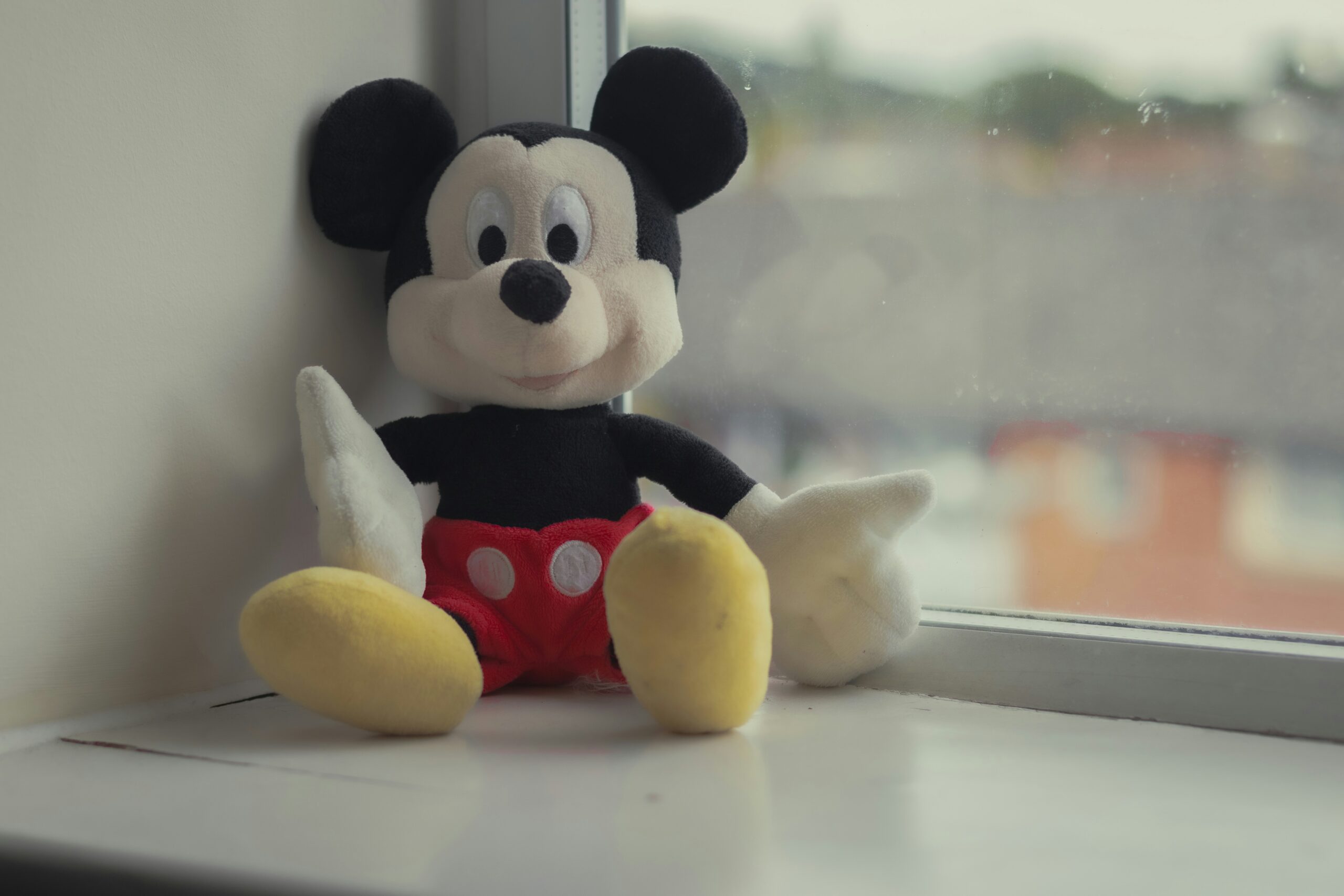Introduction: The Charm of Lovable Fat Characters
The world of animation is rich with diverse characters, and among them, fat cartoon characters hold a unique place. These characters frequently play pivotal roles in storytelling, offering humor, warmth, and relatability. They not only bring comic relief but also serve as symbols of enjoyment and resilience in the face of challenges. Over the years, audiences have connected deeply with these animated personalities, contributing to their enduring popularity in popular culture.
Typically characterized by their larger physiques, fat cartoon characters often embody traits such as affability, silliness, and charm. They tend to navigate various situations with a lighthearted spirit, emphasizing the importance of friendship and loyalty. Many of these characters remind us that joy can be found in the smallest moments, and that life is not solely defined by appearance. Through their antics and adventures, they often inspire viewers to embrace their own uniqueness and celebrate differences.
As we venture through the exploration of the top fat cartoon characters, we will uncover the distinctive attributes that render them unforgettable. Their impact is multifaceted, affecting generations and fostering a sense of nostalgia and fondness. The legacy of these lovable characters continues to thrive as they capture hearts, all while reminding us to appreciate the lighthearted side of life.
Garfield: The Lazy Lasagna Lover
Garfield, the iconic orange cat, has charmed audiences since his creation by Jim Davis in 1978. This lazy feline, whose primary passion revolves around food—especially lasagna—has become a symbol of indulgence and humor in the world of comics and animation. With his sardonic wit and penchant for napping, Garfield has primarily captured the hearts of millions, both young and old.
Known for his affable yet sarcastic nature, Garfield’s memorable catchphrases, such as “I hate Mondays” and “Lasagna is my favorite food,” encapsulate the essence of his character. His unyielding love for food not only adds a comedic element to his personality but also resonates with many who can identify with the joys of a hearty meal. His attitude towards life, often characterized by apathy and a love for comfort, further solidifies his role as the quintessential lazy pet.
The impact of Garfield extends far beyond newspaper strips; he has been featured in various television specials, animated series, and movies, proving his adaptability across different media platforms. Whether in the form of comic strips or full-length animated features, Garfield’s gluttonous and witty demeanor remains intact, making him a beloved character across generations. Additionally, the relatable scenarios he faces—struggles with weight, daily life’s mundanity, and his interactions with other characters like Odie and his owner Jon Arbuckle—further enhance his appeal.
As a cultural icon, Garfield not only reflects our love for food and humor, but also embodies a comforting presence in popular culture. Through his whimsical and lazy antics, he reminds us to take life a little less seriously, providing laughter and joy to the comic landscape for over four decades. His enduring popularity serves as a testament to the timeless nature of this lovable fat cartoon character.
Homer Simpson: The Everyman Dad
Homer Simpson, the beloved character from the iconic animated series ‘The Simpsons,’ serves as a quintessential representation of the everyman dad. He is emblematic of the middle-class American experience, often depicted as a bumbling but well-meaning figure who seeks to provide for his family despite various personal shortcomings. Homer’s character was carefully crafted to resonate with audiences, showcasing both humorous and poignant moments that contribute to his relatability.
One of Homer’s most defining traits is his love for donuts and beer, which highlights his simpler, indulgent pleasures in life. These habits not only serve as comedic devices but also reflect the struggles of many individuals trying to find joy in mundane, everyday situations. Homer’s frequent mishaps and quirky personality create a comedic lens through which viewers can explore themes of family dynamics, responsibility, and the eternal quest for happiness amid life’s chaos.
Throughout the series, Homer has experienced a myriad of challenges, from job difficulties at the Springfield Nuclear Power Plant to parenting mishaps with his children, Bart, Lisa, and Maggie. These situations often yield both laughter and lessons, making him a multifaceted character. His genuine affection for his family, despite his flaws, establishes a deeper emotional connection that resonates with viewers of all ages. The show’s ability to blend humor with genuine heart has solidified Homer’s status as an enduring figure in pop culture.
Moreover, his interactions with other characters, such as Marge, his loving yet often exasperated wife, serve to enhance his role as the everyman dad. Together, they navigate the complexities of familial life, providing a humorous yet realistic depiction of marriage and parenting. Ultimately, Homer Simpson captures the essence of the modern father—flawed yet lovable, striving to do his best for his family while finding humor in his everyday trials.
Shrek: The Green Ogre with a Heart
Shrek, the iconic character introduced in the DreamWorks animated film series, is a prime example of a fat cartoon character whose depth and relatability resonate with audiences of all ages. Initially portrayed as a misunderstood ogre living in isolation, Shrek’s external appearance masks a heart full of love and compassion. His journey from outcast to hero is not merely a narrative arc; it serves as a profound exploration of themes such as acceptance, friendship, and self-discovery.
The character’s size and appearance contribute to the overarching narrative in both humorous and meaningful ways. Shrek’s bulkiness is often highlighted as a means of comedy, utilized in several comedic scenarios throughout the films. Nevertheless, it also accentuates the societal preference for appearances over substance, drawing attention to the message that true worth is rooted within, rather than in outward appearances. This juxtaposition allows Shrek to become a nuanced character that challenges stereotypes associated with being different.
As the story unfolds, Shrek embarks on an unexpected adventure, accompanied by a motley crew of characters, including the talkative Donkey and Princess Fiona. Together, they navigate a world where they confront various challenges, revealing the importance of acceptance and the power of friendship. The evolution of Shrek’s character showcases his transition from a solitary figure to someone who embraces the beauty of community and love, all while maintaining a humorous undertone that makes him endearing.
In essence, Shrek’s character is an embodiment of the idea that love and acceptance come in many forms, often transcending societal norms. His journey reminds audiences that everyone, regardless of their size or appearance, has the ability to make a meaningful impact in the world. Shrek continues to be a beloved character, exemplifying the complexities and joys found in embracing one’s true self.
Winnie the Pooh: The Honey-Obsessed Bear
Winnie the Pooh is not just a character; he is a beloved symbol of childhood innocence and adventure. Created by A.A. Milne in the early 20th century, this honey-loving bear has enchanted generations with his simple yet profound outlook on life. Pooh is characterized by his insatiable craving for honey, which often drives the plot of his delightful stories. His folly and childlike curiosity resonate strongly with audiences, allowing them to immerse themselves in the whimsical world of the Hundred Acre Wood.
The adventures of Winnie the Pooh are filled with valuable lessons disguised in humor and charm. Whether he is devising clever plans to score honey or getting himself stuck in a tight spot, Pooh’s antics are relatable and forgivable, making him a perfect representation of innocence. Alongside his friends, such as Piglet, Eeyore, Tigger, and Rabbit, Pooh’s encounters are often reflective of the challenges faced in friendship and cooperation, reinforcing the importance of camaraderie.
The emotional depth of Winnie the Pooh extends beyond mere entertainment. His friendships, particularly with Piglet, highlight themes of loyalty and support, which resonate with audiences young and old. Pooh’s gentle nature and simplistic wisdom remind us of the importance of taking joy from the little things in life. Importantly, the creator of this character infused the stories with a sense of warmth and love, endearing Pooh to readers worldwide.
Winnie the Pooh remains an iconic figure in pop culture, celebrated through various adaptations, including animated films, merchandise, and theme park attractions. His legacy continues to thrive, affirming that the charm of a honey-obsessed bear transcends time, making him a loved character across cultures and generations.
Patrick Star: The Lovable Sea Star
Patrick Star, a beloved character from the animated television series ‘SpongeBob SquarePants,’ epitomizes the charm of simplicity and humor. As SpongeBob’s best friend, Patrick is known for his pink exterior and lazy lifestyle, which often leads to whimsical misadventures in the underwater city of Bikini Bottom. His character is not only central to the show’s comedic elements but also to its underlying themes of friendship and loyalty.
One of the defining traits of Patrick Star is his carefree and often oblivious attitude toward life. He approaches challenges with a naive optimism that frequently results in humorous situations. Whether he is attempting to assist SpongeBob or embarking on a random quest, Patrick’s lack of common sense leads to some of the show’s most memorable moments. His comedic timing, paired with his catchphrases and facial expressions, adds to his appeal, making him an unforgettable figure in the realm of animated characters.
The friendship between Patrick and SpongeBob is a cornerstone of the series. Together, they navigate the ups and downs of life under the sea, showing viewers that true friendship is characterized by unwavering support, laughter, and acceptance of each other’s quirks. Despite his often-silly behavior, Patrick demonstrates moments of unexpected wisdom, reminding audiences that simplicity can lead to profound insights. His lovable nature resonates with both children and adults, allowing him to maintain a prominent place in popular culture.
In a world filled with complex characters, Patrick Star stands out as a representation of humor and innocence. His encouraging demeanor and hilarious antics ensure that he remains a cherished character in the hearts of many fans. As the series continues to capture the imaginations of viewers across generations, Patrick’s enduring appeal showcases the lasting impact of well-crafted animated characters.
Fat Albert: The Realistic Representation of Friendship
Fat Albert, a beloved character from the animated series ‘Fat Albert and the Cosby Kids,’ created by Bill Cosby, is an iconic figure in the realm of children’s television. Depicted as a jovial and rotund young man, Fat Albert serves as a key representation of friendship and community within an urban setting. His character is not just defined by his size; rather, it is an integral part of his personality that adds depth to his interactions with peers and life experiences.
The character embraces his physical traits, using humor and relatability to connect with audiences. Fat Albert’s charm lies in how he tackles social issues such as self-acceptance, friendship, and family dynamics, often reflecting real-life scenarios that resonate with viewers. The portrayal of friendship among Fat Albert and his friends—who collectively navigate the challenges of adolescence—creates a sense of camaraderie that underscores the importance of support and understanding within a community.
Throughout the series, moments of humor are woven seamlessly into the narrative, illustrating how laughter can ease difficult situations and strengthen the bonds of friendship. Fat Albert often finds himself in amusing predicaments, which serve as a catalyst for valuable life lessons. For instance, the character often addresses themes such as bullying and socioeconomic struggles, highlighting how community plays a crucial role in overcoming adversity. This realistic representation reflects the dynamics of friendship and the ways individuals uplift each other, embodying the essence of togetherness.
In conclusion, Fat Albert stands out as a fat cartoon character whose size complements his rich personality, making him an enduring symbol of friendship, resilience, and community values. The character’s relatability and humor continue to resonate with audiences across generations, solidifying his place in popular culture.
7. Baymax: The Gentle Healthcare Companion
Baymax is a beloved character from Disney’s animated film “Big Hero 6.” This inflatable healthcare robot stands out not only for his unique design but also for his gentle demeanor and unwavering support for those in need. Created by the young genius Hiro Hamada, Baymax is specifically built to provide medical assistance, reflecting his role as a symbol of care and compassion in the narrative.
His soft, rounded shape signifies tranquility and safety, making him an approachable figure for both children and adults. Unlike typical portrayals of technology, Baymax’s appearance provides an immediate sense of reassurance. His inflatable nature, coupled with a huggable exterior, enhances the feelings of warmth and comfort that he brings to the story. This design reinforces the idea that healthcare can be gentle and nurturing, rather than intimidating or sterile. As Baymax interacts with various characters in the film, his kindness elevates him from a mere tool of healthcare to a true companion.
The character’s role extends beyond that of a healthcare provider; he embodies the essence of empathy. Baymax’s primary function is to assist his friends and facilitate their emotional healing, showcasing how health and wellness encompass both physical and mental states. With his gentle prompts and soothing presence, he encourages characters to confront their struggles, making his influence pivotal in their journeys toward recovery. The dynamic between Hiro and Baymax illustrates a profound bond, emphasizing the importance of support systems in overcoming adversity.
In summary, Baymax serves as a reminder of the significance of compassion in healthcare. His endearing design and kind-hearted nature resonate deeply, highlighting the vital role that gentle care plays in both physical and emotional well-being, reinforcing why this fat cartoon character is cherished by audiences everywhere.
8. The Hippopotamus from The Animal Show: The Fun-Loving Performer
One of the most beloved figures from the animated series “The Animal Show” is the enchanting hippopotamus, who stands out not only for her plump physique but also for her vibrant and joyful personality. Known for bringing life to every episode, her character serves as a delightful embodiment of fun and entertainment. The hippo has a knack for performance, often taking the stage to engage the audience with her singing and dancing talents.
Her approach to life is marked by an optimistic disposition, which resonates with viewers of all ages. Whether she is belting out a catchy tune or moving to a lively beat, the cartoon hippo captures the essence of joyfulness that is infectious. This character reflects a world where laughter and music are integral components of life, making her a memorable part of the show’s ambiance. The comedic elements added through her antics and expressions contribute to her status as a fan favorite. The hippo’s exaggerations and humorous situations often lead to comedic moments that leave audiences smiling.
Ultimately, the hippo from “The Animal Show” not only entertains but also promotes the idea of enjoying life, celebrating one’s talents, and sharing joy with others. Her lively performances serve as a reminder that enthusiasm and positivity are essential, making her a character that many continue to adore. This character, through her love for fun and music, stands as a testament to the impact that vibrant, overweight cartoon characters can have on pop culture. Her ability to represent the joy of performance continues to resonate, ensuring her legacy as a cherished figure in the animation landscape.
Conclusion: Celebrating Fat Cartoon Characters
Fat cartoon characters have played a significant role in shaping the landscape of entertainment, drawing attention to themes such as humor, resilience, and acceptance. Throughout this blog post, we have explored various iconic figures that not only entertain but also resonate with audiences on a deeper level. These characters, whether they are portrayed as comical sidekicks or lovable heroes, highlight the versatility of storytelling within animated realms.
One of the key aspects we discussed is how fat cartoon characters have the power to enhance narratives. Their unique perspectives and experiences often add richness to the plots, allowing for greater emotional engagement. These characters challenge the conventional norms of beauty that dominate media. By presenting representations of diverse body types, they foster a sense of inclusion and promote body positivity. This shift in portrayal encourages audiences, particularly children, to embrace their individuality and appreciate their own bodies regardless of size.
Additionally, fat cartoon characters are frequently the source of laughter, providing comedic relief that resonates with viewers of all ages. Their antics and relatable struggles can bring joy to families and friends alike, creating shared moments of happiness. As a result, they reinforce the importance of humor and its vital role in coping with life’s challenges.
In conclusion, the legacy of fat cartoon characters extends beyond mere entertainment; it is a celebration of diversity and self-acceptance. They remind us that every body deserves to be represented, loved, and valued. As we continue to witness evolving portrayals in animation, it is evident that the impact of these cherished characters will endure, shaping future narratives in inclusive and meaningful ways.

We share information about current trends and stories of people all around the world.



